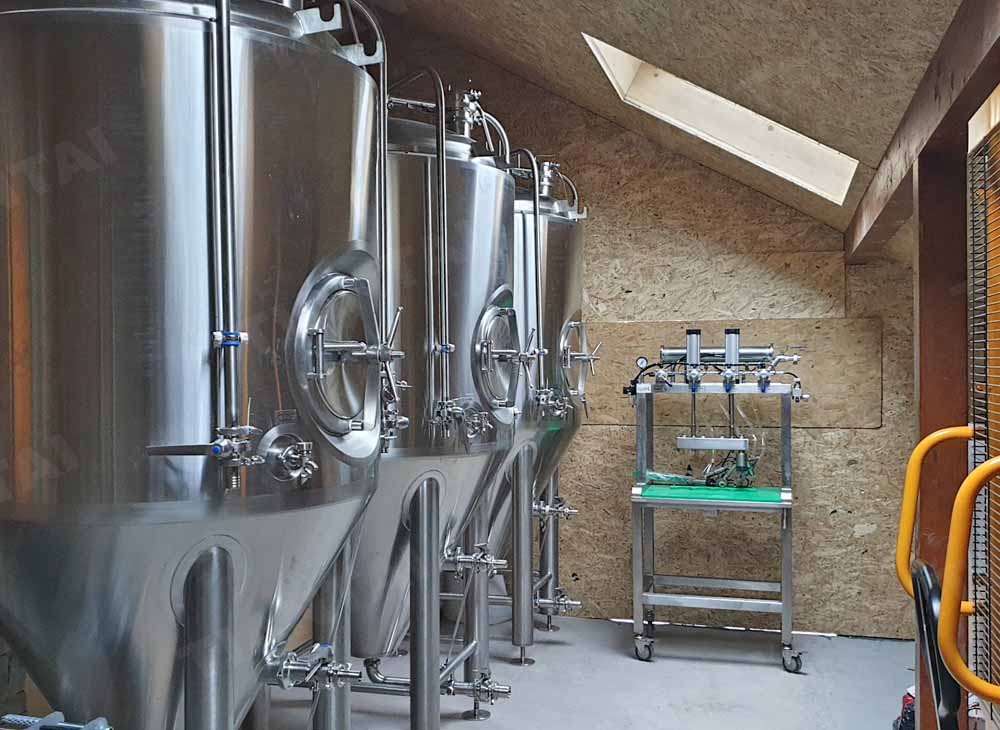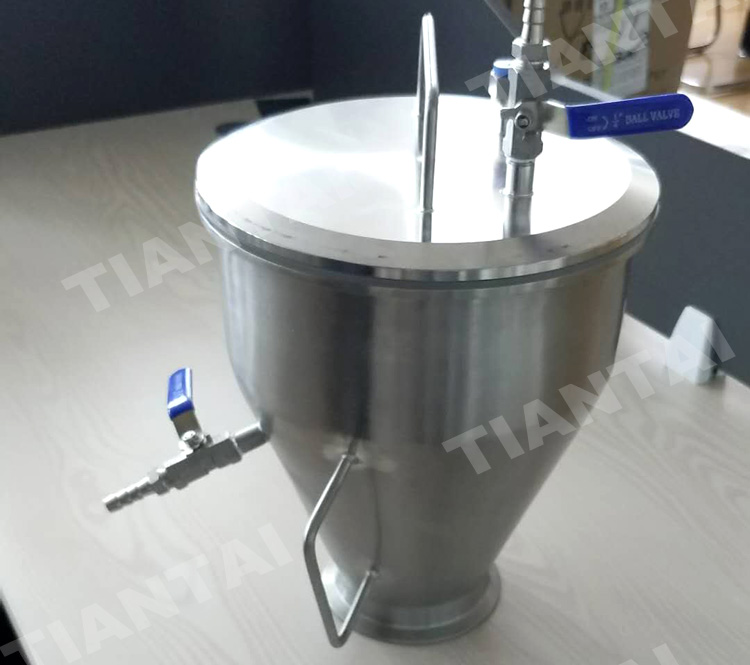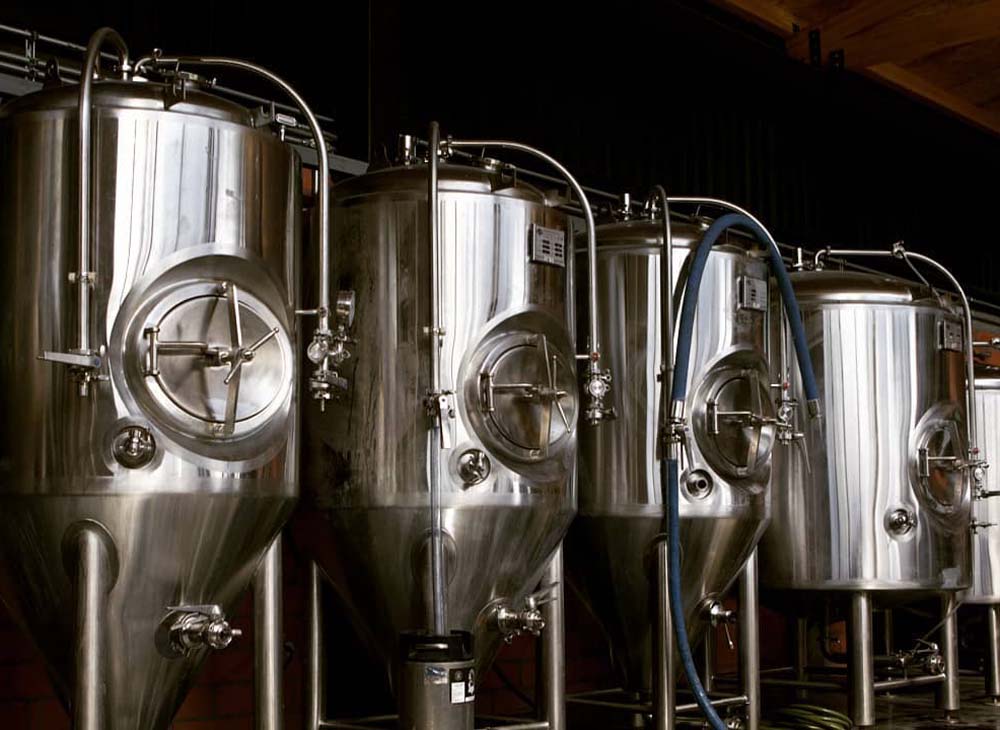The Pros and Cons of Going Electric brewery
- Jul 29, 2021
- 189
- tiantai
An electric brewery gives you the option of brewing inside year-round. There are some nice commercial electric systems and components available that let you do anything from a brew-in-a-bag single-vessel brew to a full three-tier RIMS/HERMS system, to an all-in-one system. Here are some of the things to consider when planning an electric system.
Brewing all-grain inside any time of the year can be a real joy. You can set up a permanent brewing area with easy access to water, ingredients, and equipment. Electric systems are silent, efficient, and require no propane. Setup times can be significantly reduced, and you don’t need to worry about outdoor “elements” flying into your pot. Since it is more convenient to brew, you may brew more often, so you can consider a smaller system.
An indoor brewery requires some planning and setup. You need to find a suitable space for brewing and storing equipment inside. Electricity can be a major concern, and you may need to hire an electrician to install a new circuit, outlet, or breaker to ensure you have a protected circuit with enough capacity for your heating element. Power outlets should have a Ground Fault Circuit Interrupter (GFCI) outlet (the outlets with the small test/reset buttons) or a GFCI breaker installed with sufficient amperage to support your heating element. When brewing, you are mixing water and electricity, so you don’t want to skimp on safety—a GFCI is truly required.

While most modern kitchens and bathrooms have GFCI, older homes do not. In addition, if you are going to brew more than 5 gallons (19 liters), you will almost certainly need 220−240 volt power like that found on an electric dryer or stovetop.
Another consideration for electric breweries is ventilation during the boil. A 5-gallon (19-liter) brewery will evaporate a gallon (4 liters) or more of water during an average 60−90 minute boil. A typical 10-gallon (38-liter) system boils off 2−4 gallons (8−16 liters). If you are brewing in an enclosed area with limited ventilation (such as a basement) this can cause serious condensation problems and even water damage or mold. The average dehumidifier or air conditioner will take 24 or more hours to dissipate that much water. Even a window or bathroom fan won’t be able to collect or move enough air for a large brewing system.
When working with a large indoor system, you need something to collect the steam from the boil and move it outside. Ideally, you want to install a range hood, condensation hood, or similar system over your boil pot. You can find a number of articles online that will help you calculate the airflow and vent size needed for a given heating element size. Some brewers use their kitchen-range hood or set up temporary hoods and fans to vent their boil to a nearby window or door.
Derrick
Sales Manager
[email protected]
Tiantai Beer Equipment
Brewing all-grain inside any time of the year can be a real joy. You can set up a permanent brewing area with easy access to water, ingredients, and equipment. Electric systems are silent, efficient, and require no propane. Setup times can be significantly reduced, and you don’t need to worry about outdoor “elements” flying into your pot. Since it is more convenient to brew, you may brew more often, so you can consider a smaller system.
An indoor brewery requires some planning and setup. You need to find a suitable space for brewing and storing equipment inside. Electricity can be a major concern, and you may need to hire an electrician to install a new circuit, outlet, or breaker to ensure you have a protected circuit with enough capacity for your heating element. Power outlets should have a Ground Fault Circuit Interrupter (GFCI) outlet (the outlets with the small test/reset buttons) or a GFCI breaker installed with sufficient amperage to support your heating element. When brewing, you are mixing water and electricity, so you don’t want to skimp on safety—a GFCI is truly required.

While most modern kitchens and bathrooms have GFCI, older homes do not. In addition, if you are going to brew more than 5 gallons (19 liters), you will almost certainly need 220−240 volt power like that found on an electric dryer or stovetop.
Another consideration for electric breweries is ventilation during the boil. A 5-gallon (19-liter) brewery will evaporate a gallon (4 liters) or more of water during an average 60−90 minute boil. A typical 10-gallon (38-liter) system boils off 2−4 gallons (8−16 liters). If you are brewing in an enclosed area with limited ventilation (such as a basement) this can cause serious condensation problems and even water damage or mold. The average dehumidifier or air conditioner will take 24 or more hours to dissipate that much water. Even a window or bathroom fan won’t be able to collect or move enough air for a large brewing system.
When working with a large indoor system, you need something to collect the steam from the boil and move it outside. Ideally, you want to install a range hood, condensation hood, or similar system over your boil pot. You can find a number of articles online that will help you calculate the airflow and vent size needed for a given heating element size. Some brewers use their kitchen-range hood or set up temporary hoods and fans to vent their boil to a nearby window or door.
Derrick
Sales Manager
[email protected]
Tiantai Beer Equipment




.jpg)